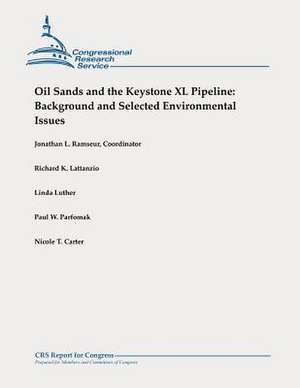Oil Sands and the Keystone XL Pipeline
Autor Jonathan L. Ramseur, Richard K. Lattanzio, Linda Lutheren Limba Engleză Paperback
Preț: 101.80 lei
Nou
Puncte Express: 153
Preț estimativ în valută:
19.49€ • 21.17$ • 16.38£
19.49€ • 21.17$ • 16.38£
Carte disponibilă
Livrare economică 31 martie-14 aprilie
Preluare comenzi: 021 569.72.76
Specificații
ISBN-13: 9781478355434
ISBN-10: 1478355433
Pagini: 56
Dimensiuni: 216 x 280 x 3 mm
Greutate: 0.15 kg
Editura: CREATESPACE
ISBN-10: 1478355433
Pagini: 56
Dimensiuni: 216 x 280 x 3 mm
Greutate: 0.15 kg
Editura: CREATESPACE
